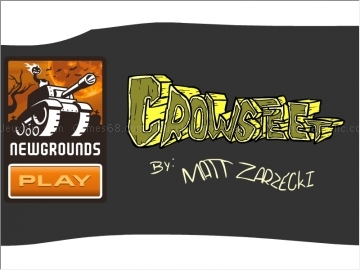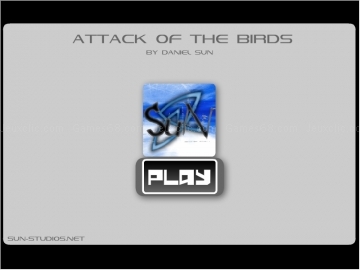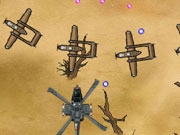Games |
- Micromachines, Vol. 2, Pages 274-294: Recent Progress in Piezoelectric Conversion and Energy Harvesting Using Nonlinear Electronic Interfaces and Issues in Small Scale Implementation
- Sensors, Vol. 11, Pages 5981-6002: Application of Composite Dictionary Multi-Atom Matching in Gear Fault Diagnosis
- Entropy, Vol. 13, Pages 1076-1136: A Philosophical Treatise of Universal Induction
- Micromachines, Vol. 2, Pages 258-273: Optimization of Liquid DiElectroPhoresis (LDEP) Digital Microfluidic Transduction for Biomedical Applications
- IJMS, Vol. 12, Pages 3594-3605: Experimental and Numerical Analysis of High-Resolution Injection Technique for Capillary Electrophoresis Microchip
- Micromachines, Vol. 2, Pages 221-257: Multi-Beam Interference Advances and Applications: Nano-Electronics, Photonic Crystals, Metamaterials, Subwavelength Structures, Optical Trapping, and Biomedical Structures
- Viruses, Vol. 3, Pages 659-676: Is Network Clustering Detectable in Transmission Trees?
- IJMS, Vol. 12, Pages 3576-3593: Microfluidic Technologies for Synthetic Biology
- IJERPH, Vol. 8, Pages 1936-1956: Ground Water Chemistry Changes before Major Earthquakes and Possible Effects on Animals
- Game Transformers decepticond : 03/06/2011
- Game Neurotically yours - picture imperfect : 03/06/2011
- Game Bloons Tower Defense 4 : 03/06/2011
- Game Puzzatales : 03/06/2011
- Game Level Editor - The Game : 03/06/2011
- Game Crows feet : 03/06/2011
- Game Minushi episode 9 : 03/06/2011
- Game Wake Up the Box : 03/06/2011
- Game Attack of the birds : 03/06/2011
- Game Dragon Boy : 03/06/2011
- Game Battlefield airwolf invincible : 03/06/2011
| Posted: 03 Jun 2011 12:00 AM PDT This paper aims at providing an up-to-date review of nonlinear electronic interfaces for energy harvesting from mechanical vibrations using piezoelectric coupling. The basic principles and the direct application to energy harvesting of nonlinear treatment of the output voltage of the transducers for conversion enhancement will be recalled, and extensions of this approach presented. Latest advances in this field will be exposed, such as the use of intermediate energy tanks for decoupling or initial energy injection for conversion magnification. A comparative analysis of each of these techniques will be performed, highlighting the advantages and drawbacks of the methods, in terms of efficiency, performance under several excitation conditions, complexity of implementation and so on. Finally, a special focus of their implementation in the case of low voltage output transducers (as in the case of microsystems) will be presented. |
| Posted: 03 Jun 2011 12:00 AM PDT The sparse decomposition based on matching pursuit is an adaptive sparse expression method for signals. This paper proposes an idea concerning a composite dictionary multi-atom matching decomposition and reconstruction algorithm, and the introduction of threshold de-noising in the reconstruction algorithm. Based on the structural characteristics of gear fault signals, a composite dictionary combining the impulse time-frequency dictionary and the Fourier dictionary was constituted, and a genetic algorithm was applied to search for the best matching atom. The analysis results of gear fault simulation signals indicated the effectiveness of the hard threshold, and the impulse or harmonic characteristic components could be separately extracted. Meanwhile, the robustness of the composite dictionary multi-atom matching algorithm at different noise levels was investigated. Aiming at the effects of data lengths on the calculation efficiency of the algorithm, an improved segmented decomposition and reconstruction algorithm was proposed, and the calculation efficiency of the decomposition algorithm was significantly enhanced. In addition it is shown that the multi-atom matching algorithm was superior to the single-atom matching algorithm in both calculation efficiency and algorithm robustness. Finally, the above algorithm was applied to gear fault engineering signals, and achieved good results. |
| Entropy, Vol. 13, Pages 1076-1136: A Philosophical Treatise of Universal Induction Posted: 03 Jun 2011 12:00 AM PDT Understanding inductive reasoning is a problem that has engaged mankind for thousands of years. This problem is relevant to a wide range of fields and is integral to the philosophy of science. It has been tackled by many great minds ranging from philosophers to scientists to mathematicians, and more recently computer scientists. In this article we argue the case for Solomonoff Induction, a formal inductive framework which combines algorithmic information theory with the Bayesian framework. Although it achieves excellent theoretical results and is based on solid philosophical foundations, the requisite technical knowledge necessary for understanding this framework has caused it to remain largely unknown and unappreciated in the wider scientific community. The main contribution of this article is to convey Solomonoff induction and its related concepts in a generally accessible form with the aim of bridging this current technical gap. In the process we examine the major historical contributions that have led to the formulation of Solomonoff Induction as well as criticisms of Solomonoff and induction in general. In particular we examine how Solomonoff induction addresses many issues that have plagued other inductive systems, such as the black ravens paradox and the confirmation problem, and compare this approach with other recent approaches. |
| Posted: 03 Jun 2011 12:00 AM PDT Digital microfluidic has recently been under intensive study, as an effective method to carry out liquid manipulation in Lab-On-a-Chip (LOC) systems. Among droplet actuation forces, ElectroWetting on Dielectric (EWOD) and Liquid DiElectroPhoresis (LDEP) are powerful tools, used in many LOC platforms. Such digital microfluidic transductions do not require integration of complex mechanical components such as pumps and valves to perform the fluidic operations. However, although LDEP has been proved to be efficient to carry and manipulate biological components in insulating liquids, this microfluidic transduction requires several hundreds of volts at relatively high frequencies (kHz to MHz). With the purpose to develop integrated microsystems µ-TAS (Micro Total Analysis System) or Point of Care systems, the goal here is to reduce such high actuation voltage, the power consumption, though using standard dielectric materials. This paper gives key rules to determine the best tradeoff between liquid manipulation efficiency, low-power consumption and robustness of microsystems using LDEP actuation. This study leans on an electromechanical model to describe liquid manipulation that is applied to an experimental setup, and provides precise quantification of both actuation voltage Vth and frequency fc thresholds between EWOD and LDEP regimes. In particular, several parameters will be investigated to quantify Vth and fc, such as the influence of the chip materials, the electrodes size and the device configurations. Compared to current studies in the field, significant reduction of both Vth and fc is achieved by optimization of the aforementioned parameters. |
| Posted: 03 Jun 2011 12:00 AM PDT This study presents an experimental and numerical investigation on the use of high-resolution injection techniques to deliver sample plugs within a capillary electrophoresis (CE) microchip. The CE microfluidic device was integrated into a U-shaped injection system and an expansion chamber located at the inlet of the separation channel, which can miniize the sample leakage effect and deliver a high-quality sample plug into the separation channel so that the detection performance of the device is enhanced. The proposed 45° U-shaped injection system was investigated using a sample of Rhodamine B dye. Meanwhile, the analysis of the current CE microfluidic chip was studied by considering the separation of Hae III digested φx-174 DNA samples. The experimental and numerical results indicate that the included 45° U-shaped injector completely eliminates the sample leakage and an expansion separation channel with an expansion ratio of 2.5 delivers a sample plug with a perfect detection shape and highest concentration intensity, hence enabling an optimal injection and separation performance. |
| Posted: 03 Jun 2011 12:00 AM PDT Research in recent years has greatly advanced the understanding and capabilities of multi-beam interference (MBI). With this technology it is now possible to generate a wide range of one-, two-, and three-dimensional periodic optical-intensity distributions at the micro- and nano-scale over a large length/area/volume. These patterns may be used directly or recorded in photo-sensitive materials using multi-beam interference lithography (MBIL) to accomplish subwavelength patterning. Advances in MBI and MBIL and a very wide range of applications areas including nano-electronics, photonic crystals, metamaterials, subwavelength structures, optical trapping, and biomedical structures are reviewed and put into a unified perspective. |
| Viruses, Vol. 3, Pages 659-676: Is Network Clustering Detectable in Transmission Trees? Posted: 03 Jun 2011 12:00 AM PDT Networks are often used to model the contact processes that allow pathogens to spread between hosts but it remains unclear which models best describe these networks. One question is whether clustering in networks, roughly defined as the propensity for triangles to form, affects the dynamics of disease spread. We perform a simulation study to see if there is a signal in epidemic transmission trees of clustering. We simulate susceptible-exposed-infectious-removed (SEIR) epidemics (with no re-infection) over networks with fixed degree sequences but different levels of clustering and compare trees from networks with the same degree sequence and different clustering levels. We find that the variation of such trees simulated on networks with different levels of clustering is barely greater than those simulated on networks with the same level of clustering, suggesting that clustering can not be detected in transmission data when re-infection does not occur. |
| IJMS, Vol. 12, Pages 3576-3593: Microfluidic Technologies for Synthetic Biology Posted: 03 Jun 2011 12:00 AM PDT Microfluidic technologies have shown powerful abilities for reducing cost, time, and labor, and at the same time, for increasing accuracy, throughput, and performance in the analysis of biological and biochemical samples compared with the conventional, macroscale instruments. Synthetic biology is an emerging field of biology and has drawn much attraction due to its potential to create novel, functional biological parts and systems for special purposes. Since it is believed that the development of synthetic biology can be accelerated through the use of microfluidic technology, in this review work we focus our discussion on the latest microfluidic technologies that can provide unprecedented means in synthetic biology for dynamic profiling of gene expression/regulation with high resolution, highly sensitive on-chip and off-chip detection of metabolites, and whole-cell analysis. |
| Posted: 01 Jun 2011 12:00 AM PDT Prior to major earthquakes many changes in the environment have been documented. Though often subtle and fleeting, these changes are noticeable at the land surface, in water, in the air, and in the ionosphere. Key to understanding these diverse pre-earthquake phenomena has been the discovery that, when tectonic stresses build up in the Earth's crust, highly mobile electronic charge carriers are activated. These charge carriers are defect electrons on the oxygen anion sublattice of silicate minerals, known as positive holes, chemically equivalent to O– in a matrix of O2–. They are remarkable inasmuch as they can flow out of the stressed rock volume and spread into the surrounding unstressed rocks. Travelling fast and far the positive holes cause a range of follow-on reactions when they arrive at the Earth's surface, where they cause air ionization, injecting massive amounts of primarily positive air ions into the lower atmosphere. When they arrive at the rock-water interface, they act as •O radicals, oxidizing water to hydrogen peroxide. Other reactions at the rock-water interface include the oxidation or partial oxidation of dissolved organic compounds, leading to changes of their fluorescence spectra. Some compounds thus formed may be irritants or toxins to certain species of animals. Common toads, Bufo bufo, were observed to exhibit a highly unusual behavior prior to a M6.3 earthquake that hit L'Aquila, Italy, on April 06, 2009: a few days before the seismic event the toads suddenly disappeared from their breeding site in a small lake about 75 km from the epicenter and did not return until after the aftershock series. In this paper we discuss potential changes in groundwater chemistry prior to seismic events and their possible effects on animals. |
| Game Transformers decepticond : 03/06/2011 Posted: 05 Jan 2011 04:08 PM PST |
| Game Neurotically yours - picture imperfect : 03/06/2011 Posted: 05 Jan 2011 04:02 PM PST |
| Game Bloons Tower Defense 4 : 03/06/2011 Posted: 05 Jan 2011 04:04 PM PST |
| Posted: 05 Jan 2011 03:07 PM PST |
| Game Level Editor - The Game : 03/06/2011 Posted: 05 Jan 2011 04:06 PM PST |
| Posted: 05 Jan 2011 03:06 PM PST |
| Game Minushi episode 9 : 03/06/2011 Posted: 05 Jan 2011 04:04 PM PST |
| Game Wake Up the Box : 03/06/2011 Posted: 05 Jan 2011 04:06 PM PST |
| Game Attack of the birds : 03/06/2011 Posted: 05 Jan 2011 04:07 PM PST |
| Posted: 05 Jan 2011 03:07 PM PST |
| Game Battlefield airwolf invincible : 03/06/2011 Posted: 05 Jan 2011 03:08 PM PST |
| You are subscribed to email updates from Games To stop receiving these emails, you may unsubscribe now. | Email delivery powered by Google |
| Google Inc., 20 West Kinzie, Chicago IL USA 60610 | |












Комментариев нет:
Отправить комментарий